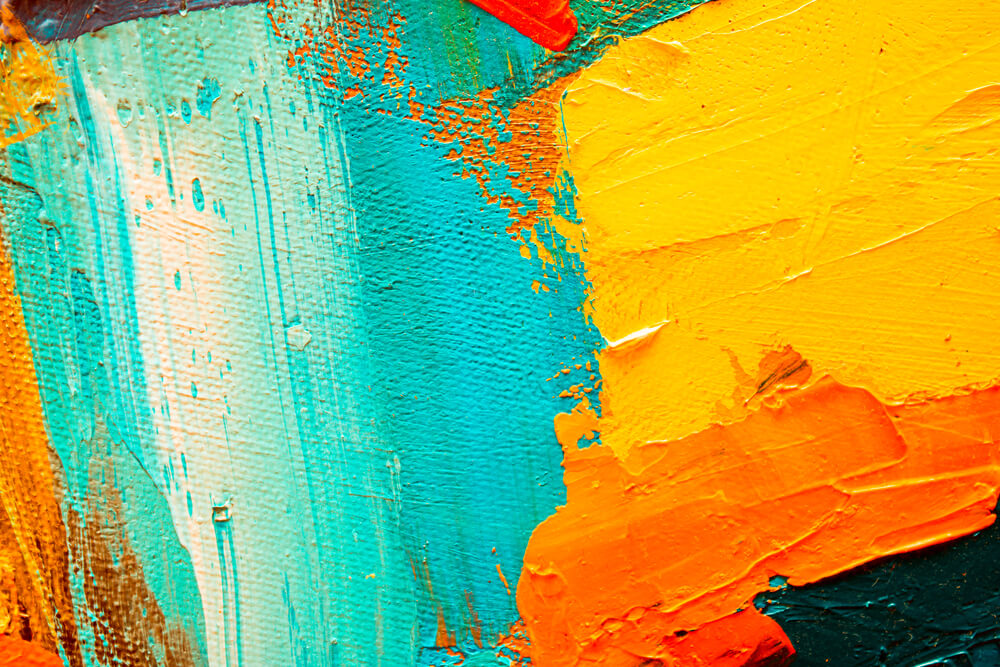Water Soluble Versus Traditional Oil Paints: What’s the Difference?

If you like the idea of using oil paints but don’t like the idea of cleaning your brushes with solvents, there’s a solution. If you can’t use oil paints due to skin sensitivities or asthma, or your art space is small and not well ventilated, there’s a solution for this too....
The answer might be water soluble (sometimes known as water mixable) oils.
What are water soluble paints?
Water soluble oils are oil paints that can be diluted and cleaned with water rather than solvents. They contain dry pigments (colour), an oil binder (usually Modified Linseed or Modified Safflower Oil), and an additive used in the manufacturing process that acts as an emulsifier. This last part helps form a stable blend of tiny oil droplets within the water.
Water soluble paints are real oil paints, not a water-based medium. They are just like regular oil paints, except that they are made with an emulsifier that enables the oil paints to be thinned with water and to be cleaned using only soap and water. General’s Brush Cleaner and Restorer works a treat!
Water soluble paints are good for people with allergies to solvents and those who work in close quarters with other artists in a studio. They still dry by oxidation like traditional oil paints, they just dry a little quicker. Generally speaking, water soluble oil remains workable for around 48 hours, however this will depend on whether or not you add a drying medium to your paint. Water-mixable paintings cannot be reactivated with water once dry.
The difference between water soluble paints and traditional oil paints
The traditional rule of gradation of layers, eg. ‘fat over lean’ or ‘flexible over less flexible’, applies to water soluble paint as it does to traditional oil. In this respect, the two kinds of paints behave in the same way and can be used interchangeably. Their handling, however, is slightly different.
When water soluble paint is thinned with water to a considerably liquid phase, it tends to feel and behave like watercolour. By contrast, when used as a short paste without water for heavy impasto work, it tends to drag, developing a consistency somewhat gummier or tackier and a little less buttery than traditional oils. At mid-range, water soluble paint is gouache-like, sharing properties of both transparent watercolour and opaque oil.
In summary, the handling of water soluble paint changes considerably as it passes from one phase to another, making it a versatile medium. It does, however, require you to develop skills in which to successfully manipulate it and exploit its range.
Mixing the two
Normal or traditional oil paints will mix with water soluble paints, but you will find that the more traditional oil paint you add, the less water-mixable the paint becomes. This is logical, as traditional oils don’t mix with water.
The general guideline is to mix traditional oil paints and mediums with water soluble oil paints in small amounts (about 25/75) to ensure the mixture retains its solubility in water. You can also mix mediums made for traditional oils with water soluble oil paints, although these too will affect the water solubility of the paint. With this in mind, it’s better to use water-soluble mediums made specifically for this type of paint.
In this video, professional artist Will Kemp talks through the different handling properties of water soluble paint and traditional oils, and he demonstrates techniques using water and mediums. The approach he takes is similar to how you would build up a painting using traditional oils or acrylics, so see how it fares. Starting with a very watery wash then using paint straight from the tube, Will then makes a jump to a medium to get past the stickiness.
Swapping traditional oils for water soluble oil paint
Oil painting purists might shudder at the thought, but water soluble oils are here to stay. Many painters have discovered the joy and flexibility of working with these newer oils, and there are many reasons why you might consider using them yourself.
As great as oils are, they have always had their drawbacks. Long drying times and harsh fumes from solvents are amongst the biggest complaints from artists concerning oils, and this can scare off beginners and cause painters with allergies to avoid oils altogether.
Water soluble oils offer more versatility than traditional oils, while still offering many of the traditional benefits of oil painting. This includes colour brilliance, paint texture and body. In fact, water soluble paints retain almost all aspects which painters love about oil paints, the only difference being that they are accessible, convenient and easier to work with than traditional oils. With practice and attention to how they are mixed, water soluble oils can produce stunning paintings that rival the colour depth and texture of those done with traditional oils.
When you begin to use water soluble oils, you will find that they are much like working with traditional oils. If you find that diluting with water takes away the sheen and depth of colour, try diluting them with linseed oil instead. There are specially formulated oils designed to work with these non-traditional water soluble oils.
Synthetic brushes are recommended for use with water soluble oil paints, since they are more durable in water than brushes made of natural hair.
Ready to start playing with water soluble oil paint? For first timers, the Winsor & Newton Artisan Water Mixable Oil Colours is an economically priced set that includes six or ten 21ml tubes of colour. Add it to your shopping basket today.
